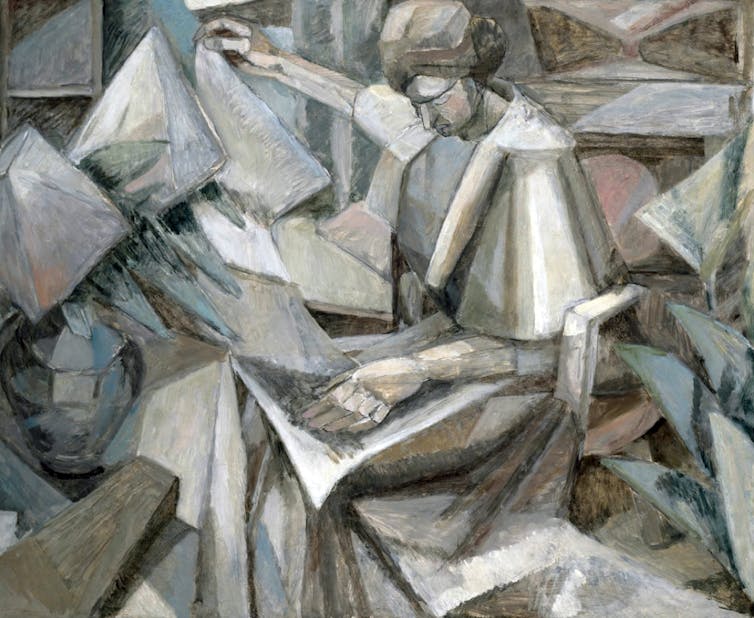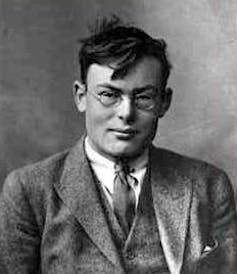‘QBism’: quantum mechanics is not a description of objective reality – it reveals a world of genuine free will
What does quantum mechanics, the most successful theory ever proposed by physics, teach us about reality?

Estimated reading time: 12 minutes
Ruediger Schack, Royal Holloway University of London
The starting point for most philosophers of physics is that quantum mechanics must somehow provide a description of the world as it is independently of us, the users of the theory.
This has led to a large number of incompatible worldviews. Some believe the implication of quantum mechanics is that there are parallel worlds as in the Marvel Comic universe; some believe it implies signals that travel faster than light, contradicting all that Einstein taught us. Some say it implies that the future affects the past.
According to QBism, an approach developed by Christopher Fuchs and me, the great lesson of quantum mechanics is that the usual starting point of the philosophers is simply wrong. Quantum mechanics does not describe reality as it is by itself. Instead, it is a tool that helps guide agents immersed in the world when they contemplate taking actions on parts of it external to themselves.
This is article is accompanied by a podcast series called Great Mysteries of Physics which uncovers the greatest mysteries facing physicists today – and discusses the radical proposals for solving them.
The use of the word “agent” rather than the familiar “observer” highlights that quantum mechanics is about actions that participate in creating reality, rather than observations of a reality that exists independently of the agent.
QBism and its homophone, the art movement Cubism, share the understanding that reality is more than what a single agent’s perspective can capture. However, unlike the art movement, QBism does not attempt to represent reality. It does not attempt to bring the different perspectives together in one “third-person” view. QBism is fundamentally anti-representational and first person.
Rescuing free will
This puts QBism in direct contradiction with the two pillars of the 19th-century conception of a mechanistic universe. One is that nature is governed by physical laws in the same way that a mechanical toy is governed by its mechanism. The other is that it is, in principle, possible to have an objective view of the universe from the outside – from a God’s eye or third-person standpoint.
This mechanistic vision is still dominant among 21st-century scientists. For instance, in their 2010 book The Grand Design, Stephen Hawking and Leonard Mlodinow write: “It is hard to imagine how free will can operate if our behaviour is determined by physical law, so it seems that we are no more than biological machines and that free will is just an illusion.”
Instead, the QBist vision is that of an unfinished universe, of a world that allows for genuine freedom, a world in which agents matter and participate in the making of reality.
A key aspect of quantum mechanics is randomness. Rather than making firm predictions, quantum mechanics is concerned with the probabilities for potential measurement outcomes. The physicist Ed Jaynes famously expressed that to understand quantum mechanics, one has to understand probability first.

In this spirit, QBism’s starting point is the personalist Bayesian approach to probability (originally a method of statistical inference and now a fully fledged theory of decision making under uncertainty). In this approach, probabilities are an agent’s personal degrees of belief.
So rather than describing the statistics of some experiment, probabilities provide guidance to agents on how they should act. In other words, probabilities are not descriptive but “normative” – analogous to an instruction manual. It turns out that the standard probability rules can be derived from the (normative) principle that one’s probabilities should fit together in a way that guards against a sure loss when used for making decisions.
QBism’s great insight was that the probabilities that appear in quantum mechanics are no different. They are not, as in the standard view, fixed by physical law, but express an agent’s personal degrees of belief about the consequences of measurement actions the agent is contemplating.
In QBism, the role of the quantum laws is to provide extra normative principles about how an agent’s probabilities should fit together. Rather than providing a description of the world, the rules of quantum mechanics are an addition to the standard probability rules; to classical (non-quantum) decision theory. They assist physicists in decisions such as how to design a quantum computer in order to minimise the probability of error, or what atoms to use in an atomic clock in order to increase the precision of time measurements.
Measurements are actions
Just like “observer”, the term “measurement” can be misleading because it suggests a pre-existing property that is revealed by the measurement. Instead, a measurement should be thought of as an action an agent takes to elicit a response from the world. A measurement is an act of creation that brings something entirely new into the world, an outcome that is shared between the agent and the agent’s external world.
Quantum mechanics is often depicted as “weird” and hard, or indeed impossible, to understand. As a matter of fact, the weirdness of quantum mechanics is an artefact of looking at it the wrong way. Once the two main QBist insights - that the quantum rules are guides to action and that measurements do not reveal pre-existing properties - are taken on board, all quantum paradoxes disappear.
Take Schrödinger’s cat, for example. In the usual formulation, the unfortunate animal is described by a “quantum state” taken to be a part of reality and implying that the cat is neither dead nor alive.
The QBist, by contrast, does not regard the quantum state as a part of reality. The quantum state a QBist agent might assign has no bearing on whether the cat is alive or dead. All it expresses is the agent’s expectations concerning the consequences of possible actions they might take on the cat. Unlike most interpretations of quantum mechanics, QBism respects the fundamental autonomy of the cat.
Or take quantum teleportation. According to a common way of presenting this operation, a particle’s quantum state, again regarded as a part of reality, disappears at one place (A) and mysteriously reappears at another (B) - quite literally as in a transporter in the Star Trek science fiction series.
For a QBist, however, nothing real is transported from A to B. All that happens in quantum teleportation is that an agent’s belief about the particle at A becomes, after the operation, the same agent’s belief about a particle at B. The quantum state that expresses the agent’s belief about the particle at A initially is mathematically identical to the quantum state that expresses that same agent’s belief about the particle at B after the operation. Quantum teleportation is a powerful tool used in applications such as quantum computing, but in QBism there is nothing counter-intuitive or weird about it.
QBism is an ongoing project. It spells out clearly the meaning of all mathematical objects in the theory and is thus a fully developed interpretation of quantum mechanics. Yet, QBism is also a programme for developing new physics and has already yielded deep insights even if it is still a work in progress.
QBism has also led to a fruitful dialogue with the kindred philosophical schools of thought of pragmatism and phenomenology. Its vision of the world is one in which agents possess genuine freedom and respect each other’s autonomy. I like to think that this is what quantum mechanics has been trying to tell us about reality all along.![]()
Ruediger Schack, Professor of mathematics, Royal Holloway University of London
This article is republished from The Conversation under a Creative Commons license. Read the original article.
What's Your Reaction?
























